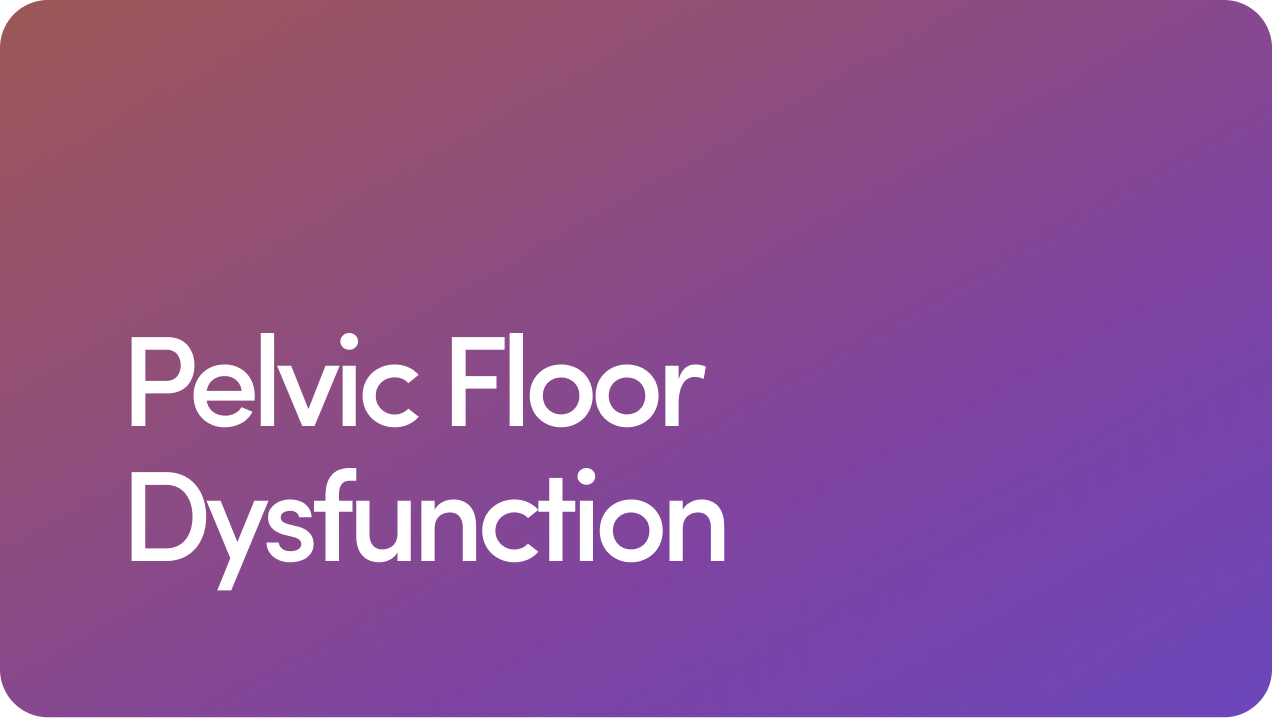Does Having Sex Increase Testosterone?
Hormones are deeply linked to the way our bodies function. Take testosterone, which has implications on everything from sexual performance and sex drive to mental health and body hair.
Overview
Does Having Sex Increase Testosterone?
Hormones are deeply linked to the way our bodies function. Take testosterone, which has implications on everything from sexual performance and sex drive to mental health and body hair.
But what exactly changes the level of testosterone in the body? Unfortunately, this answer—and its implications—can be a bit more vague.
For example, does having sex increase testosterone levels? And if so, how much—if at all—does that bump matter? It turns out that sexual activity can cause a spike in testosterone, these changes may only be temporary. And unless you have low testosterone, any increase may not be necessary or meaningful for you.
The Basics
Sex and Testosterone Levels: How They’re Related
Before we examine the relationship between testosterone production and sexual behavior, it’s crucial to understand how hormones like testosterone actually work.
Hormones are essentially molecules that affect certain biochemical processes of cellular function. You might think of them as command prompts for your cells, organs, and other bodily functions: If you’re reproducing, metabolizing, fighting, sprinting, or even sleeping, there’s a good chance a hormone told your body to complete the task.
Hormones regulate how your body grows and manage the production of vital chemicals like insulin. They also play an important role in various aspects of men’s health, including sex drive, hair growth, muscles, and skin health.
Hormones also help regulate blood levels. A nearly imperceptible volume of these molecular messengers keeps an organ or tissue functioning or shuts it down completely.
Sexual Function and Testosterone Production
In the case of sexual function, the hormone testosterone is a key player in your libido.
Research also suggests that abnormal testosterone levels can impact sexual performance. It’s also a Goldilocks-esque scenario, where high testosterone may be linked to premature ejaculation, while lower testosterone is associated with delayed ejaculation and reduced ejaculatory volume.
So, yes, there is a strong relationship between testosterone and sex. But more testosterone isn’t always better.
Does Sex Affect Testosterone?
How Does Sex Affect Levels of Testosterone?
Just because hormone levels can affect sex doesn’t mean sex will affect your hormone levels. And if it does, the changes are usually temporary.
For instance, one 2020 study found that serum testosterone levels increased significantly from before the onset of an erection to the moment of ejaculation. However, T levels decreased to the pre-erection level just 10 minutes after ejaculation. This isn’t necessarily the case for all hormones, though; for instance, cortisol and prolactin also increased in response to sexual activity, but these levels remained elevated 10 minutes after ejaculation.
Does a Lack of Sex Cause Low Testosterone?
A lack of sex may affect testosterone, but probably not dramatically. While a 2021 paper found that reduced sexual activity due to erectile dysfunction (ED) lowers testosterone, resuming sexual activity restores testosterone levels, regardless of whether the ED was treated.
This tells us that sex can have an impact on testosterone levels, but the scope of that impact is unclear and, again, potentially temporary.
For the most part, testosterone levels have more to do with healthy endocrine function and age than your weekly, monthly, or annual sex average.
Testosterone and ED
The Connection Between Low T and ED
Low testosterone (testosterone deficiency or hypogonadism) can be a contributing factor to ED as men get older.
Testosterone supports erectile function by regulating the sex drive and helping the body make, store, and release pro-erectile neurotransmitters, like dopamine, nitric oxide, and oxytocin.
At the spinal level, testosterone helps control an erection’s firmness and affects the ability to have an orgasm. The androgen also affects the parasympathetic nerves that produce nitric oxide (NO), which works by helping to relax muscles for increased blood flow to the penis.
Other symptoms of low testosterone include:
Loss of sexual desire
Loss of muscle mass
Increase in body fat
Fatigue
Loss of body hair
Depression
Poor focus
What Causes Low T?
If you think you may have low testosterone levels, it’s time to get tested.
Normal testosterone levels range from 300 to 1000 nanograms per deciliter (ng/dL), though it’s possible to suffer from low T symptoms despite having “normal” levels on a blood test.
There are many contributing factors to low T, and finding the root cause relies heavily on the type of condition you have.
Primary hypogonadism (originating in the testicles) can be the result of:
Genetic conditions, like Klinefelter syndrome
Undescended testicles
Testicular injury
Infections like mumps orchitis
Cancer treatment
Aging
Secondary hypogonadism (originating in the brain) can be related to:
Pituitary disorders
Kallman syndrome
Obesity
HIV
Stress
Anabolic steroid use
Aging
What Causes ED?
Low testosterone may contribute to low libido and ED, but there are many other potential causes.
Contributing factors to ED include:
High cholesterol
Multiple sclerosis
Endothelial dysfunction
Spinal cord injuries
Sleep apnea
Depression
Obesity
Smoking and alcohol use
If you’re struggling with low T symptoms or erectile dysfunction, it’s always a good idea to check in with your healthcare provider in order to rule out serious health conditions.
Treatment Options
Treatment Options for Low T
Testosterone replacement therapy (TRT) can be highly effective for reducing symptoms of low testosterone, helping to improve effects like low libido, energy levels, and more.
Studies also show that treating hypogonadism with TRT can improve ED and low libido. However, TRT tends to be more useful in men with mild ED, especially those who are not responsive to ED medications. It may not work as well for men with severe ED.
Even if you don’t have severe ED, TRT may not be for you. It comes with side effects like low sperm count and infertility, so be sure to discuss your fertility and general health goals with your healthcare provider when deciding whether it is the best option for you.
Treatment Options for ED
If you’re having trouble getting or maintaining an erection, numerous medications approved by the U.S. Food and Drug Administration (FDA) can help. PDE5 inhibitors like sildenafil (generic Viagra®) and tadalafil (Cialis®) are some of the most common ED medications. They work as vasodilators, meaning they widen the blood vessels and help to improve blood flow to the penis.
If you’re looking for something more discreet, consider chewable ED medications like Hims Hard Mints, which contain the same active ingredients as Viagra and Cialis in personalized dosages.
What to Do Next
Next Steps
Your sex life probably isn’t the primary cause of any huge shifts to your testosterone levels. The amount of sexual intercourse you’d have to have on a regular basis to make serious or long-term changes to your testosterone levels is too epic to calculate.
Here’s what we know and how you can run with it:
Having sex increases your testosterone, but only temporarily. From erection to ejaculation, your testosterone increases during sexual activity. But the increase is typically minimal and temporary.
If your testosterone is low, it’s time to see a doctor. If you notice issues that might be associated with out-of-balance T levels, it’s time to get medical advice from a healthcare professional. You might also want to note other telltale symptoms, like fatigue, mood changes, loss of muscle mass, and loss of body hair.
Low T can contribute to ED, but both conditions are treatable. A healthcare provider can aid you with health tips and recommendations for problems like erectile dysfunction, low libido, and whatever else you might be worried about in relation to low T. They can also rule out other potential causes of these problems. Treatments include TRT for low T and PDE5 inhibitors for ED, though they aren’t the only options.
If you’re struggling with ED or low testosterone, get in touch with a medical provider today and explore your options.
11 Sources
- Corona G, et al. (2008). Different testosterone levels are associated with ejaculatory dysfunction. https://pubmed.ncbi.nlm.nih.gov/18399946/
- Kobori Y, et al. (2020). SERUM TESTOSTERONE LEVEL RISES DRASTICALLY AT THE MOMENT OF EJACULATION. https://www.fertstert.org/article/S0015-0282(20)31902-6/fulltext
- Leslie S, et al. (2024). Erectile Dysfunction. https://www.ncbi.nlm.nih.gov/books/NBK562253/
- Mascherek A, et al. (2021). Is Ejaculation Frequency in Men Related to General and Mental Health? Looking Back and Looking Forward. https://www.ncbi.nlm.nih.gov/pmc/articles/PMC8382266/
- McLaughlin M, et al. (2022). Biochemistry, Hormones. https://www.ncbi.nlm.nih.gov/books/NBK541112/
- Rajfer J. (2000). Relationship between testosterone and erectile dysfunction. https://www.ncbi.nlm.nih.gov/pmc/articles/PMC1476110/
- Rizk P, et al. (2017). Testosterone Therapy Improves Erectile Function and Libido in Hypogonadal Men. https://pmc.ncbi.nlm.nih.gov/articles/PMC5649360/
- Sizar O, et al. (2024). Male Hypogonadism. https://www.ncbi.nlm.nih.gov/books/NBK532933/
- Stoian D, et al. (2016). Hypogonadism in Male Sexual Dysfunction. https://www.intechopen.com/chapters/55210
- Urology Care Foundation. (n.d.). What is Low Testosterone?. https://www.urologyhealth.org/urology-a-z/l/low-testosterone
- Vignozzi L, et al. (2005). Testosterone and sexual activity. https://pubmed.ncbi.nlm.nih.gov/16042359/
Editorial Standards
Hims & Hers has strict sourcing guidelines to ensure our content is accurate and current. We rely on peer-reviewed studies, academic research institutions, and medical associations. We strive to use primary sources and refrain from using tertiary references. See a mistake? Let us know at [email protected]!
Related Conditions
 Erectile Dysfunction
Erectile Dysfunction
 Premature Ejaculation
Premature Ejaculation
 Low Testosterone
Low Testosterone
 Retrograde Ejaculation
Retrograde Ejaculation
 Pelvic Floor Dysfunction
Pelvic Floor Dysfunction
 Anorgasmia
Anorgasmia
*All images feature a model portrayal
(unless otherwise noted).